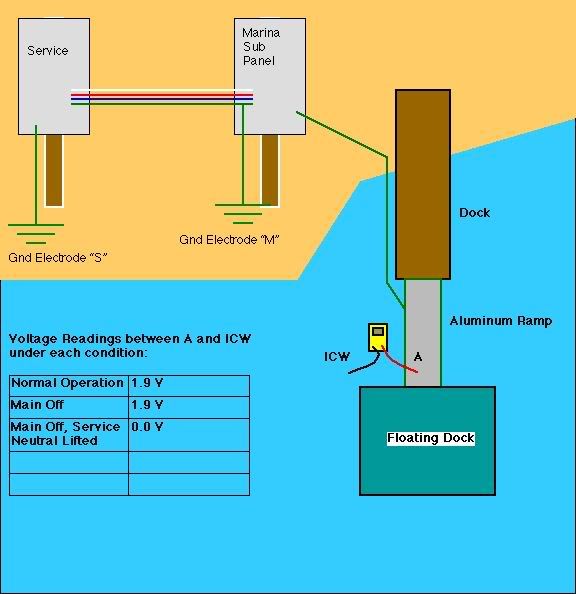e57 said:
The earth, in this case water, will be at a slightly different potential from the earth near your main panel.. This different potential can be measured.. Thats the reason code requires an electrode at seperate structures fed from the same service.
I thought ground rods were required primarily to direct lightning bolts to earth, at the seperate structure, rather that toasting the feeders back to the service electrode?
e57 said:
(electrodes are) ..To bring the Earth near that panel, and the (EGC)'s as well closer to each other in respect to a voltage difference. And reduce this type of shock hazard.
If different earth potentials are measured between two isolated ground rods why can't that voltage provide 1.5vdc of free energy to run at least a digital wrist watch? If earth potential, relative to itself, is the same everwhere that may explain why it can't provide free energy.
e57 said:
It is NOT "stray voltage", you brought it there! On your EGC! Which is why lifting the neutral at the meter made it go away. The voltage is on you EGC, not the other way around.
If the different earth potentials you refer used an external power source, such as the "fall-of-potential" method or other injection test system for earth electrodes, that may also explain why lifting the neutral (aka injection source) removed the 1.9vac.
Take away the injection source and electrode rods show nothing between each other. Bonding the injection source to all electrodes also shows nothing between electrode rods, but DVM's typically get 0-4vac common mode voltage (CMV) between branch EGC's and energized neutrals.
If the EGC is relatively dead, CMV values increase directly proportional to neutral loading. Therefore, either the EGC/aluminum dock/water is not dead, or since the open disconnect ruled out neutrals energized by a phase, that main bonding point (service neutral) may provide an injection (potential difference) from somewhere else.
I don't see an isolated earth potential between the water and a clean service neutral (free energy). So, if the PoCo cable test comes back OK -- no leakage (injection) -- and the problem will be the customer's, the only remaining idea for me is an offending vessel leaking inverted AC directly to the aluminum dock.


